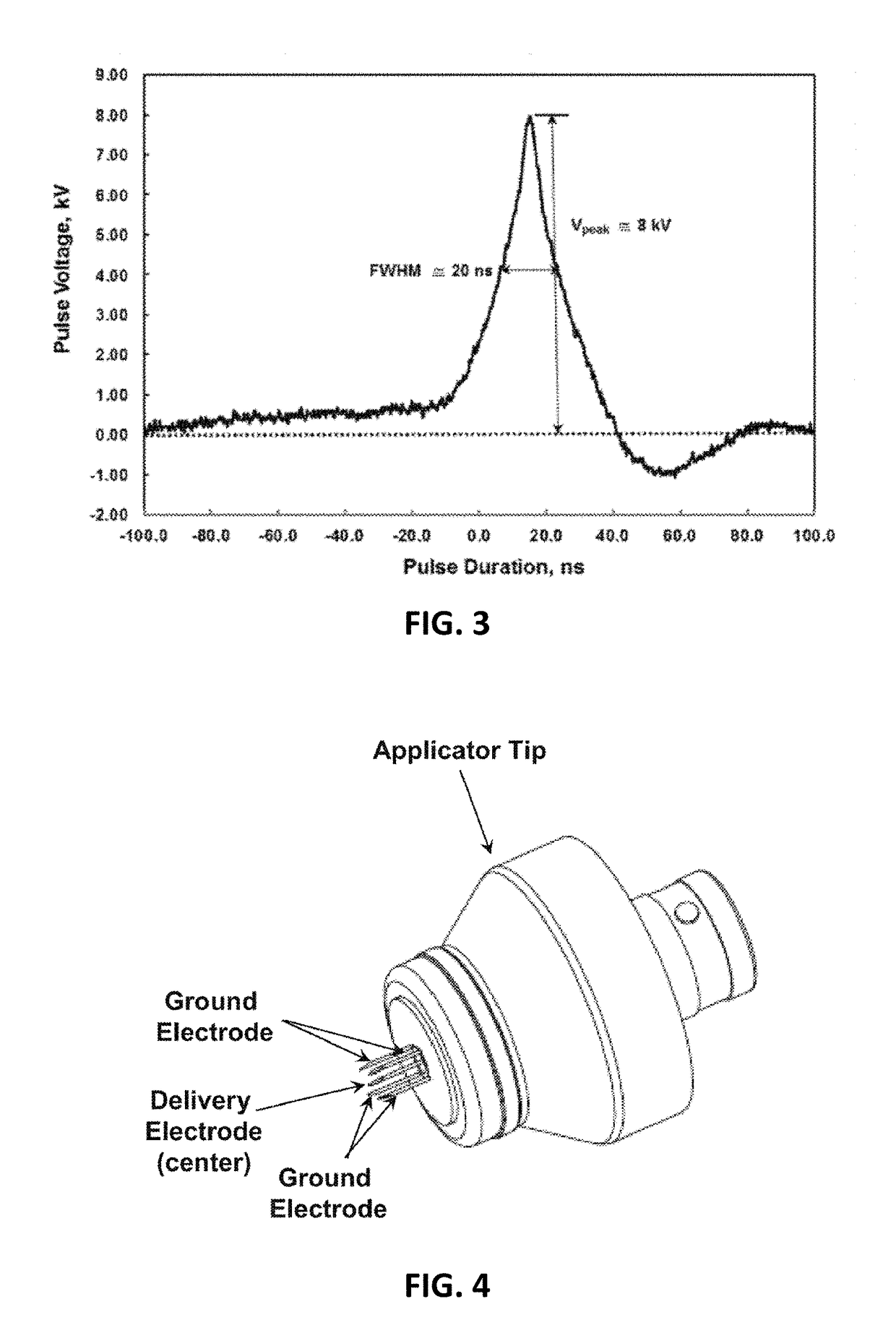Treatment of tissue by the application of energy
a technology of energy and tissue, applied in the field of tissue treatment by the application of pulsed electric fields, can solve the problems of similar sized treatment-induced lesions using fewer treatment pulses
- Summary
- Abstract
- Description
- Claims
- Application Information
AI Technical Summary
Benefits of technology
Problems solved by technology
Method used
Image
Examples
Embodiment Construction
[0110]In general, described herein are methods and apparatuses for treating tissue (including, but not limited to skin and skin lesion, e.g., to remove or reduce the skin lesion) by applying pulsed electric treatment to a region of the tissue to make cells within the region non-viable (e.g., by destroying or degrading their nuclei and / or other internal organelles, typically without disrupting their cell membranes), without provoking a substantial inflammatory response.
[0111]The methods and apparatuses described herein may be used to treat tissue by generally applying a treatment, such as pulsed electrical treatment, to the tissue. In some implementations, these methods include performing the treatment (e.g., treatment dose) in two or more portions delivered by a plurality of electrodes arranged in a pattern and rotating the pattern of electrodes used to deliver the treatment between the different portions. Although the treatment may be performed or divided up in this manner, the tre...
PUM
 Login to View More
Login to View More Abstract
Description
Claims
Application Information
 Login to View More
Login to View More - R&D
- Intellectual Property
- Life Sciences
- Materials
- Tech Scout
- Unparalleled Data Quality
- Higher Quality Content
- 60% Fewer Hallucinations
Browse by: Latest US Patents, China's latest patents, Technical Efficacy Thesaurus, Application Domain, Technology Topic, Popular Technical Reports.
© 2025 PatSnap. All rights reserved.Legal|Privacy policy|Modern Slavery Act Transparency Statement|Sitemap|About US| Contact US: help@patsnap.com



